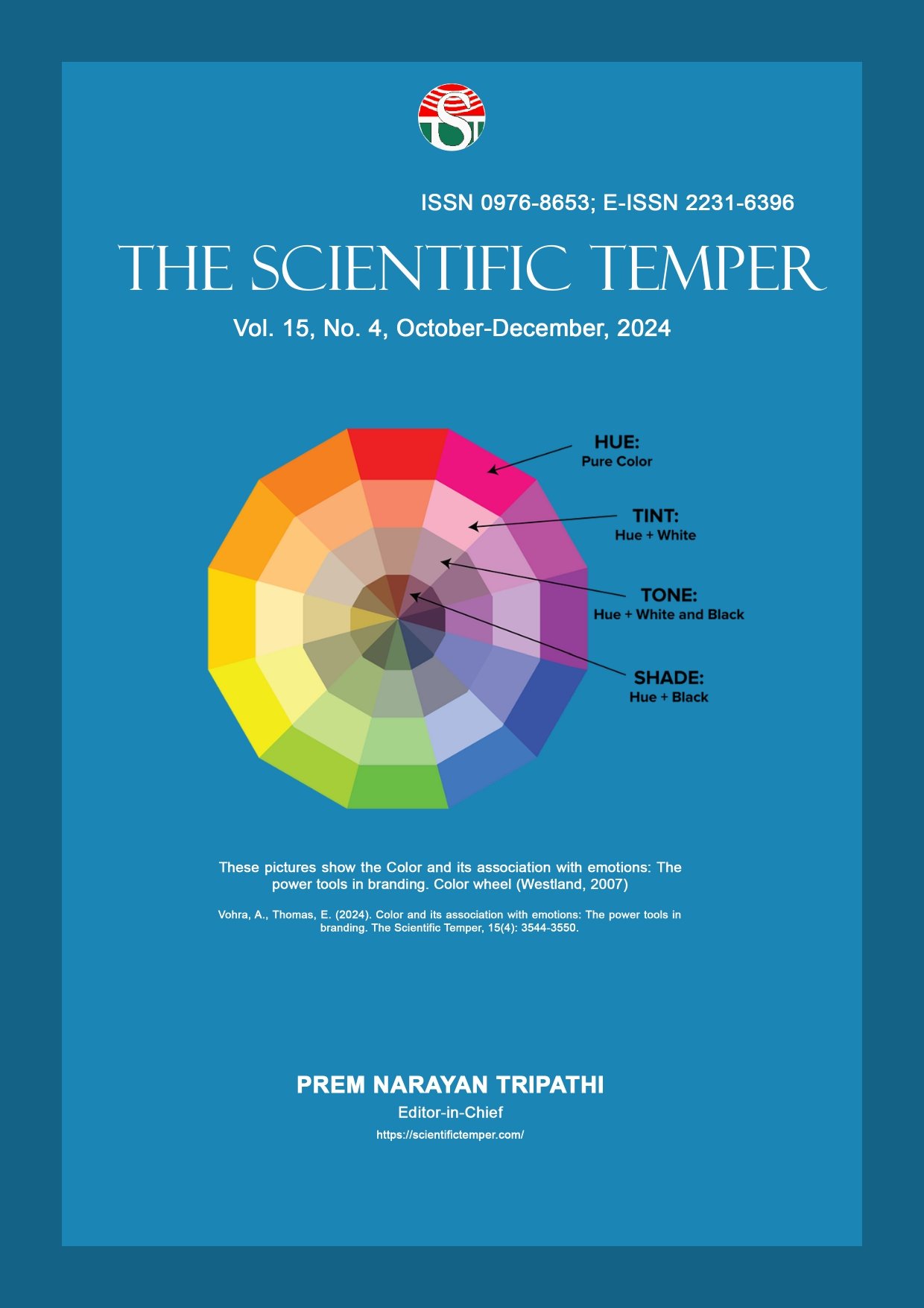Improving classification precision for medical decision systems through big data analytics application
Downloads
Published
DOI:
https://doi.org/10.58414/SCIENTIFICTEMPER.2024.15.4.28Keywords:
Medical Decision Systems, Big Data Analytics, Healthcare Data, Machine Learning, Classification AccuracyDimensions Badge
Issue
Section
License
Copyright (c) 2024 The Scientific Temper

This work is licensed under a Creative Commons Attribution-NonCommercial-ShareAlike 4.0 International License.
The rapid evolution of machine learning (ML) and big data analytics has modernized medical decision-making procedure, offering promising path for improving classification precision and ultimately, patient outcomes. This research inspects methodologies for enhancing the classification accuracy of medical decision systems by leveraging ML algorithms and big data analytics procedure. In this study, a broad evaluation of existing literature on ML applications in healthcare and medical decision-making is carried out to discover current challenges and potential areas for improvement. The research explores the integration of diverse data sources, including electronic health records (EHRs), medical imaging, genomic data, and patient-generated data, to build robust predictive models. Moreover, the research emphasizes the importance of interpretability and transparency in ML models for medical decision-making, particularly in critical healthcare settings where the rationale behind predictions is crucial. Techniques for model explainability, such as feature importance analysis and model-agnostic interpretability methods, are explored to enhance trust and adoption of ML-driven decision systems by healthcare professionals. Furthermore, the study investigates advanced ML algorithms such as deep learning, ensemble methods, and feature engineering techniques to extract meaningful patterns from large and complex medical datasets. Through experimentation with real-world medical datasets, the efficacy of these algorithms in improving classification accuracy is evaluated and compared against traditional methods. The result of this research contributes to the advancement of ML-driven medical decision systems by providing insights into strategies for improving classification accuracy, thereby facilitating more exact diagnosis, prognosis, and treatment recommendations. Ultimately, the integration of ML and big data analytics holds immense potential for revolutionizing healthcare delivery and improving patient outcomes.Abstract
How to Cite
Downloads
Similar Articles
- Balaji V, Purnendu Bikash Acharjee, Muniyandy Elangovan, Gauri Kalnoor, Ravi Rastogi, Vishnu Patidar, Developing a semantic framework for categorizing IoT agriculture sensor data: A machine learning and web semantics approach , The Scientific Temper: Vol. 14 No. 04 (2023): The Scientific Temper
- Mohamed Azharudheen A, Vijayalakshmi V, Improvement of data analysis and protection using novel privacy-preserving methods for big data application , The Scientific Temper: Vol. 15 No. 02 (2024): The Scientific Temper
- S. Udhaya Priya, M. Parveen, ETPPDMRL: A novel approach for prescriptive analytics of customer reviews via enhanced text parsing and reinforcement learning , The Scientific Temper: Vol. 16 No. 05 (2025): The Scientific Temper
- Rita Ganguly, Dharmpal Singh, Rajesh Bose, The next frontier of explainable artificial intelligence (XAI) in healthcare services: A study on PIMA diabetes dataset , The Scientific Temper: Vol. 16 No. 05 (2025): The Scientific Temper
- S. Vanaja, Hari Ganesh S, Application of data mining and machine learning approaches in the prediction of heart disease – A literature survey , The Scientific Temper: Vol. 15 No. spl-1 (2024): The Scientific Temper
- V Babydeepa, K. Sindhu, A hybrid feature selection and generative adversarial network for lung and uterus cancer prediction with big data , The Scientific Temper: Vol. 15 No. 03 (2024): The Scientific Temper
- Raja Selvaraj, Manikandasaran S. Sundari, EAM: Enhanced authentication method to ensure the authenticity and integrity of the data in VM migration to the cloud environment , The Scientific Temper: Vol. 14 No. 01 (2023): The Scientific Temper
- Lakshminarayani A, A Shaik Abdul Khadir, A blockchain-integrated smart healthcare framework utilizing dynamic hunting leadership algorithm with deep learning-based disease detection and classification model , The Scientific Temper: Vol. 15 No. 04 (2024): The Scientific Temper
- M. Iniyan, A. Banumathi, Brower blowfish nash secured stochastic neural network based disease diagnosis for medical WBAN in cloud environment , The Scientific Temper: Vol. 15 No. 03 (2024): The Scientific Temper
- Thangatharani T, M. Subalakshmi, Development of an adaptive machine learning framework for real-time anomaly detection in cybersecurity , The Scientific Temper: Vol. 16 No. 08 (2025): The Scientific Temper
<< < 1 2 3 4 5 6 7 8 9 10 > >>
You may also start an advanced similarity search for this article.



